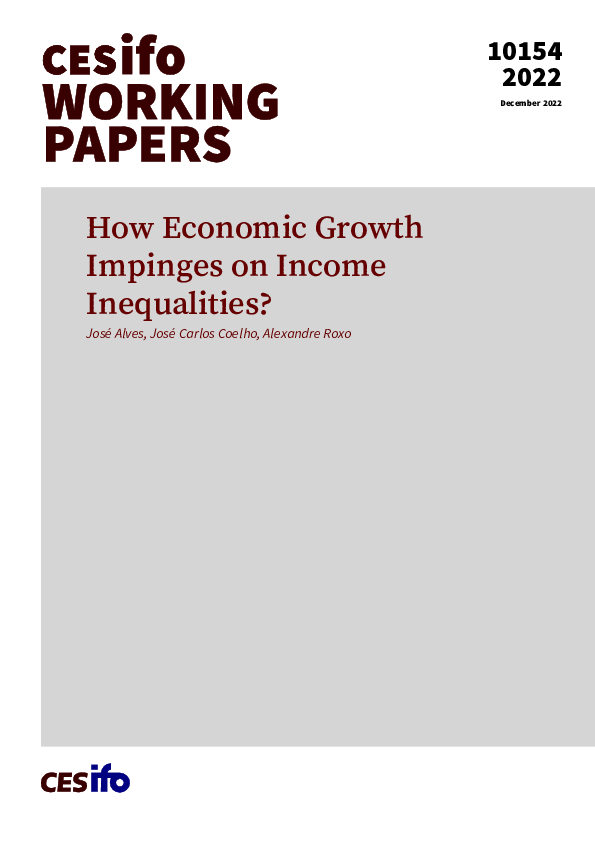How Economic Growth Impinges on Income Inequalities?
CESifo, Munich, 2022
CESifo Working Paper No. 10154

Performing a panel data analysis for OECD countries, during the period between 1990 and 2019, this article investigates the relationship between economic growth and income inequalities. The main objective is to understand how the GDP and GNI per capita affect income inequality and how they differ. The results suggest a U-shaped relationship of both measures of economic growth with the market and disposable Gini indexes, the Palma and S80S20 ratios, and the income of the wealthier 10% of population, which contradicts the Kuznets hypothesis. Regarding the thresholds’ analysis, there is evidence that when GDP per capita is used, inequality is higher, leading to the conclusion that countries with policies that inflate GDP rather than GNI are the main contributors to the rise in inequalities in the last years. Furthermore, the results also show a behavioral similarity between the income of the richest 10% of population and income inequality. Lastly, there is also a possibility to promote GNI per capita increasing policies, which could lead to higher economic growth while minimizing income inequalities.
Fiscal Policy, Macroeconomics and Growth